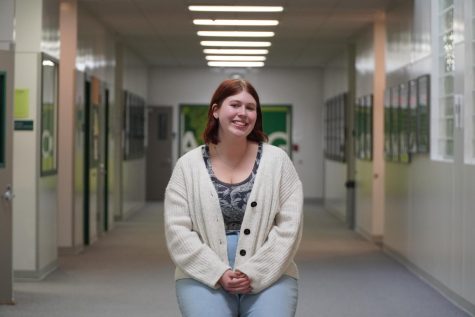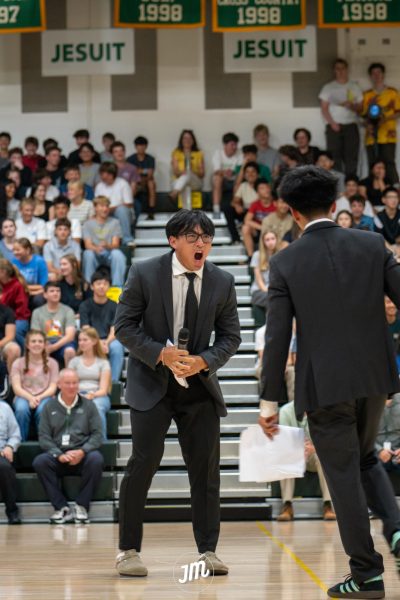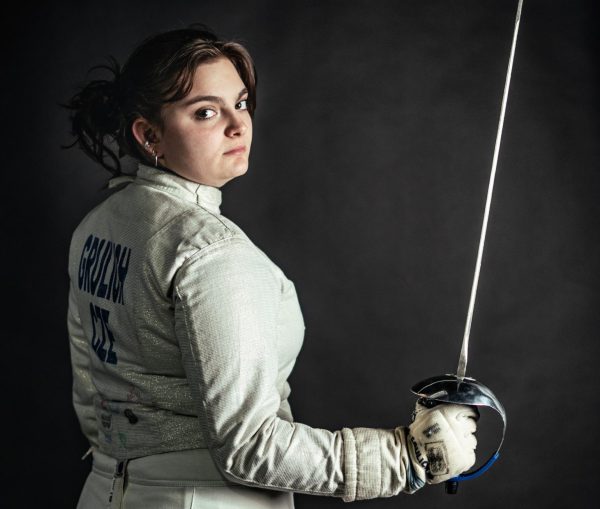AI and the Future of Education
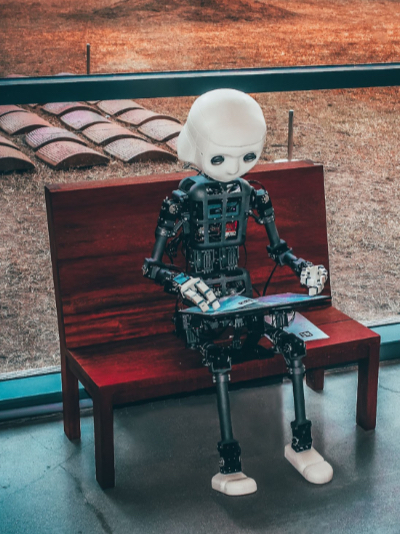
Andrea De Santis via Unsplash.com.
AI in education holds some promising uses, but it does create challenges when it comes to integrity, critical thinking skills, and work-ethic.
Artificial intelligence is increasingly being used to enhance the education experience for students, from early childhood to higher education. From personalized learning to virtual tutoring, AI technology is being used to help students learn in ways that were previously not possible. With its ability to analyze large amounts of data and adapt to the needs of individual students, AI is opening up new opportunities for educators to improve student outcomes and achieve greater success in the classroom.
That was the response I received from ChatGPT when I asked it to write an introduction to AI use in education. Pretty convincing, right? ChatGPT is a chatbot with enhanced capabilities, as it can respond to any prompt with relatively well-composed and nuanced writing, which could be a big deal in education. The possibility of integrity loss and worsened critical thinking skills worries some.
With the ability to outsource writing to a bot, some students may opt towards inputting their essay prompts into ChatGPT and receiving a piece of writing. This changes how classes could be structured, how learning is facilitated, and generally how students and educators approach writing.
Many educators, including English teacher Mr. Konrad Reinhart, are slightly concerned yet excited about the opportunity to interact with AI. His major apprehension is that students will outsource their critical thinking to AI.
“We’ve had Grammarly issues for a while with the sentence structure, but not the concept of the AI doing all the work for us,” Reinhardt said. “My first instinct was that people are not going to not be as smart as they possibly can be when we hand everything over to AI.”
Reinhardt also noted that AI takes the voice and personality out of the text, which makes it easier in some ways to detect when the Chatbot is used.
“It was more expedient, but it was like taking humanity and personalization out,” Reinhardt said. “I worry about students and people in general using this to do work that their brains are not doing.”
For Reinhardt, and other teachers, ChatGPT may force them to shift or scrap some of their more surface-level assignments, ones that could easily be done by AI.
“We need to vary our assignments so that it’s almost easier to do the assignment than use [AI],” Reinhardt said. “We still have to send students to college and they have to be thinking students, and it’s going to come for them, eventually, that they’ve been enabled.”
For other educators, including language teachers, the possibility of more advanced AI has the possibility to create lessons and writings that can be used to correct grammar or utilize certain vocabulary to refine skills in another language. This doesn’t come without issues due to language translators, like Google Translate, which has caused past problems.
Spanish teacher Señora Tracy Schick is enthused about AI’s ability to create specific paragraphs with curated vocab and grammar.
“We’re excited about the potential of ChatGPT to help us as teachers write texts in Spanish that students might be able to use as reading comprehension,” Schick said. “I had a couple of students do a project for Spanish three who asked if instead of drawing pictures, they could generate the images and it actually did a very good job. They cited the images because they had an option of also looking for images online. So that wasn’t they weren’t tasked with creating original art.”
Schick echoed that finding positive aspects of a new technology that causes initial panic is key to adapting to the newest tech.
“I’m hoping that we can find the positive aspects of that and integrate it and have it actually be helpful for students,” Schick said. “With every technological advancement there is always the potential for it to have a negative impact on people’s lives. It’s just up to us to find ways to use it in a positive way.”
Not all schools are as excited about the possibility of AI having a positive impact on their educational environment. On New York City Public Schools’ networks and devices, the chatbot is outright banned and the punishment for using the technology is a typical plagiarism punishment, according to CNN.
The trouble is identifying the plagiarism and, for educators like Darren Hicks, assistant professor of philosophy at Furman University, there are worries about enforcement of these policies.
“In more traditional forms of plagiarism – cheating off the internet, copy pasting stuff – I can go and find additional proof, evidence that I can then bring into a board hearing,” Professor Hicks said in a CNN article. “In this case, there’s nothing out there that I can point to and say, ‘Here’s the material they took.’”
Although there are positive aspects to ChatGPT, its product, the writing, often includes bias and misinformation according to The New York Times article by Brian X. Chen. The bot, because of its inability to think like a human, is riddled with misinformation and bias.
“Likewise, if you’re using ChatGPT to write an essay about a classic book, chances are that the bot will construct seemingly plausible arguments,” Chen said. “ But if others published a faulty analysis of the book on the web, that may also show up in your essay. If your essay was then posted online, you would be contributing to the spread of misinformation.”
Additionally, AI experts worry that outsourcing thinking and idea generation to AI will lead to a decrease in creativity and innovation in writing, as ChatGPT’s generative nature can bring about easier idea creation. Plagiarism is also a major concern.
To combat this issue, a student at Princeton is building a tool to detect AI Chatbots like ChatGPT as a way to combat integrity issues.
In an article written by Steve Huff on Entrepreneur.com, “Princeton student Edward Tian devoted a portion of his holiday to writing GPTZero — an application that can identify text authored by artificial intelligence.”
Additionally, ChatGPT is considering implementing a watermark, which would be a semi-transparent logo that would indicate if a text was generated by a Chatbot. According to an article by Macie LaCau on The American Genius , an entrepreneurial publication, “watermarking text in ChatGPT infuses cryptography by embedding a selection of letters, words, and punctuation in the form of a unique code.”
This could influence how students use the tool if they knew that the text had an easily identifiable mark. It is currently in the planning phase of development, according to The American Genius.
Although this tool is in use, Jesuit students appear to be resistant to using ChatGPT, with the extension of their use of AI focused on text editing tools like Grammarly.
“I can see the appeal using [ChatGPT],” senior Srishti Prabakar said. “I wouldn’t do that because at the end of the day, that’s computer writing, versus you writing, so you’ll always have a different tone and way of writing than a computer. I’m sure that whatever point you’re trying to get across will also come off differently depending on who writes it.”
Senior Olivia Walton similarly hasn’t used or observed other students using the tool, as she stressed it was an integrity violation and would not be sanctioned by Jesuit.
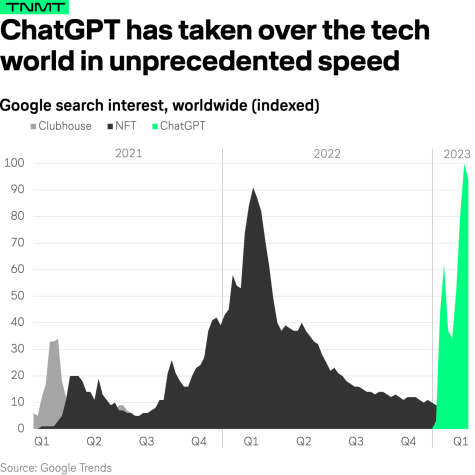
“I just use Grammarly to make sure that my wording is okay,” Walton said. “As of right now, I think most people just use Grammarly to prevent or correct their little punctuation errors.”
For Vice Principal of Professional Development and Innovation Alyssa Tormala, innovation is her key concern, and embracing unfamiliar technology, instead of immediately rejecting it, is important.
“There are pros and cons from all angles,” Tormala said. “There are ways that it can be misused, whether by students or by adults. There are also ways that it could be interestingly and creatively used. You just have to decide how this piece fits into that larger tapestry of what education is and how it continues to evolve over time.”
Although it is possible, Tormala says, to find ways to incorporate ChatGPT or tools like it into the classroom, she reiterates that Chatbots lack creativity and a human element, which leaves the work bland, and non-innovative.
“This is not a creative tool in any sense of the imagination,” Tormala said. “It’s just going out and sifting through everything it can find to get in a format that it’s been programmed to. Nothing that comes out of AI is going to be wonderful, exciting, original, creative.”
Tormala echoed similar sentiments to Reinhardt: using generative technology in the classroom now doesn’t fit within Jesuit’s education structure.
“That can be a useful tool to have,” Tormala said. “I always come back to what is that heart in the assignment or the assessment or the activity that a student is engaging in. How do we address it from that angle, as opposed to like the gotcha angle? If we’re creating an assignment or an assessment or writing activity that lends itself easily to using AI, we need to question whether that is an appropriate assignment anymore, maybe we need to shift our strategies.”
AI in education holds some promising uses, but it does create challenges when it comes to integrity, critical thinking skills, and work-ethic. It is up to educators to innovate and continue to fuel students’ intellectual curiosity without utilizing AI in compromising ways, while simultaneously keeping up and innovating with ChatGPT and other advanced technologies.
